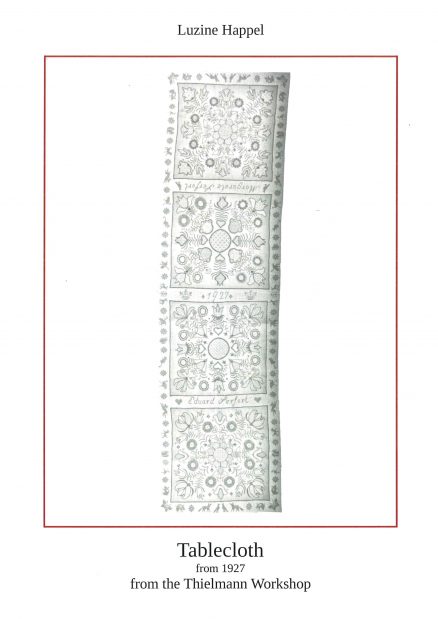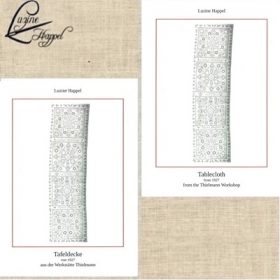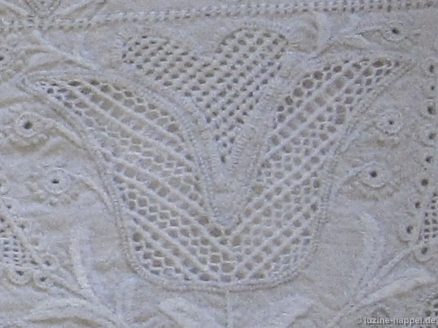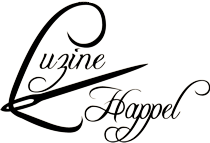After pictures of the finished embroidery of the Horizontal Bird Border were shown in a first post and details of some motifs were shown in the following post, this post deals with details of the remaining elements.
The tulip, which lies slanting to the left, has a limet grid in the middle (thread withdrawing 3:1) and Diagonal Cross Filling stitches as a filling pattern (coton à broder No. 20).

The tulip, lying slanting to the right, has an openwork grid in the middle section (thread withdrawing 2:2) and “Diagonal Cross Filling – French variation/”half” as a filling pattern (coton à broder No. 20) – Openwork Pattern Samplers, pages 32, 33)

The sides of both tulips are designed the same. Satin stitch bars (coton à broder No. 20) are worked as a simple withdrawn thread pattern (thread withdrawing 3:1 once vertically and once horizontally).
The belly of the bird looking to the right receives a special Limet thread withdrawing – namely 3:1 vertically and 2:1 horizontally.

This means that the stitches in the “Narrow Pearl Pattern” Satin stitch pattern do not become too wide (Wickelstiche, page 43)


The wing also has such a thread withdrawing, but this time 2:1 vertically and 3:1 horizontally)

and a modification of filling pattern 578 (without rows of Four-Sided stitches in between) (coton à broder No. 20).

The belly of the bird looking to the left receives a Limet thread-withdrawing 3:1

and the Satin stitch pattern “Diagonal step over one plot” (Wickelstiche, page 22) (coton à broder No. 20).

The wing also receives a thread withdrawing of 3:1

and the Satin stitch pattern “Narrow Honeycomb Pattern” (Wickelstiche, page 87) (coton à broder No. 20).

The two tulips running diagonally

receive an openwork thread withdrawing 2:2. The thread grid is secured with Cable stitches (coton à broder No. 30).
The tulips on one side receive the needle-weaving stitch pattern “135” (Openwork Needleweaving Patterns, page 71) (coton à broder No. 20)

The tulips on the other side receive the needle-weaving stitch pattern “37” (Openwork Needleweaving Patterns, page 22) (coton à broder No. 20).

The belly of the next bird looking to the left receives an openwork thread withdrawing 2:2.

The thread grid is secured with Cable stitches (coton à broder No. 30).

A pattern of needle-weaving stitches with spiders (Openwork Pattern Samplers, pages 72, 73) is embroidered.

The wing of this bird also receives an openwork grid (2:2), into which the needle-weaving stitch pattern “1” (Openwork Needleweaving Patterns, page 4) (coton à broder No. 20) is worked.
The bird’s legs remain free. The cut edges of the withdrawn threads are covered with Chain stitches.

The belly of the bird looking to the right receives a thread withdrawing 2:1 and the pattern “Houndstooth” (Limerosen I, page 40) (coton à broder No. 25).

Here too, the raw edges are covered with Chain stitches.

The wing of this bird receives a horizontal thread withdrawing 2:3.


The filling pattern 562 is worked with coton à broder No. 20.

The small remaining tulips

receive a pattern of Wave stitches in the continuous area. The narrow areas of the divided tulips are filled with Satin, Blanket and Knot stitches.

The pattern of the “Horizontal Bird Border ” offers many possibilities in addition to being used as a continuous long band. You can take individual motifs or put together smaller or larger groups.

























































